14 Things You Need To Know About Wireless Backup Camera Systems
If you are unsure about anything concerning wireless backup cameras, then read on as we delve into the 14 things you need to know about them.
1. What are wireless backup cameras exactly? Technically speaking?
If you should look at the wireless backup camera from a technical point of view, then it is simply a camera with a transmitter circuit, which takes the visual information that the camera’s lens is picking up, and modulates it into radio waves.
These waves can then travel for a certain distance, before getting picked up by a receiver.
A receiver is equally any electronic device that can pickup the information being broadcast by the transmitting device.
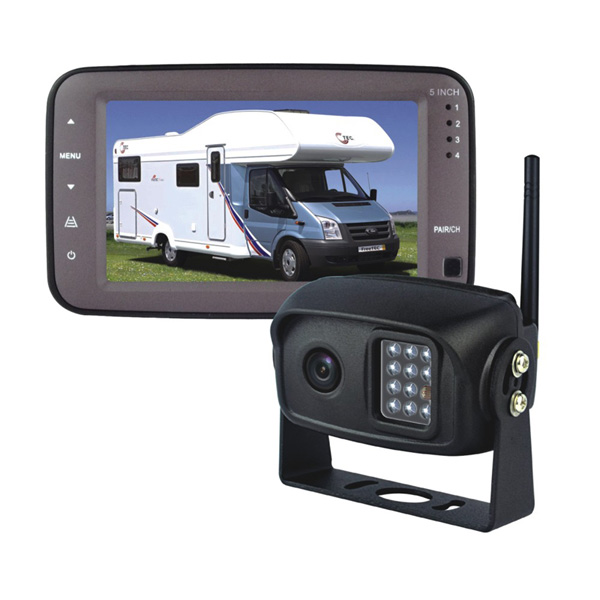
A receiver is simply made up of a resonant circuit, whose resonant frequency must be set to that of the transmitter.
The information is picked up, amplified, and then turned back into video data.
When this video data is viewed using the vehicle’s on-board monitor, we then see the video from the backup camera.
2. How Wireless backup Cameras Transmit
Waves can be modulated at any time, either intelligently or not.
In order to successfully transmit useful video data, the wireless camera device will have to adhere to certain industry standards. Such standards include video encoding formats such as VGA, PAL or SECAM.
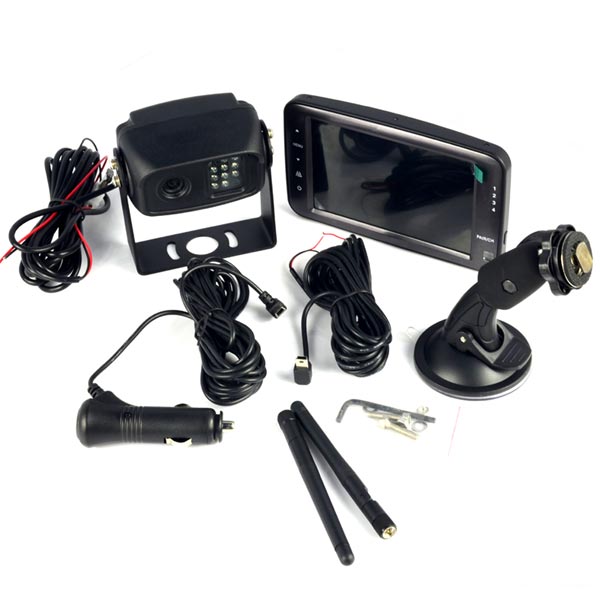

Other standards to be followed are those which deal with wireless protocols.
These are for example Frequency Modulation and Amplitude Modulation, as well as WiFi protocols like the IEEE 802.11b or IEEE 802.11g.
It is only by making use of these protocols and formats during transmission, that another device can be said to be compatible with the transmitter.
There are also frequency bands that have been designated for such applications, like 900Mhz and 2.4Ghz.
There are video resolutions like 720p (HD), 1080p (Full HD) and 1440p (Quad HD) as well.
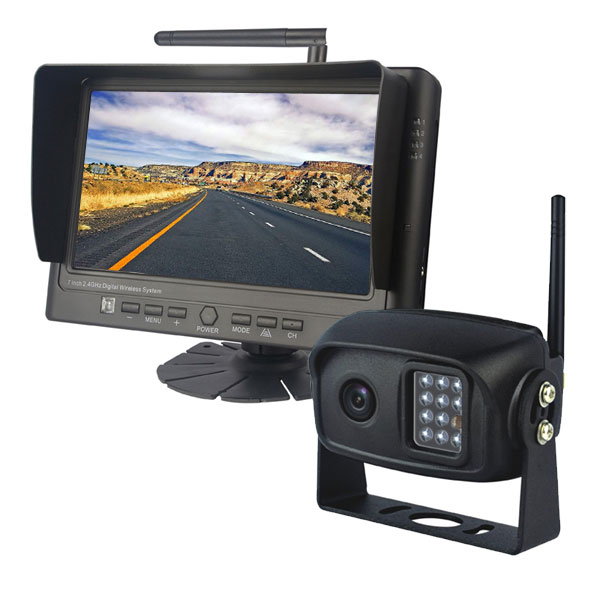

So long as a wireless camera works and transmits data based on these standards and protocols, any other standards-compliant monitor will be able to capture and display the video feed.
3. Types of Wireless Backup Camera Systems
There are two types of wireless backup camera systems. They are the analog and the digital systems.
Analog systems are an older form of electronics, which simply have a continuously variable signal.
This signal is then encoded and used to modulate the airwaves, and therefore gets transmitted thereby.
This is in contrast to digital systems, which either have a positive or a negative bit.
Analog transmitters have been used successfully for a long while, but they have their limitations.
These include their inability to successfully transmit data as far away as digital transmitters.
Due to the design of analog transmission systems and the standards that analog electronic systems have to comply with, there are also resolution and video quality limitations to be found in wireless analog transmissions.
Furthermore, analog systems are more prone to signal interference than digital systems.
This is because an analog signal is a continuous wave at a given frequency, that is modulated with data, analog wireless backup camera systems are vulnerable to bad weather conditions, as well as to interference from other camera systems or gadgets, which transmit on the same frequency band.
The rain or thunder could disrupt the signal, an Internet router or a security camera could disrupt it as well.
This makes it impossible to guarantee a 100% interference-free, wireless signal, given that wavebands could get overloaded. While a digital system is made up of individual pulses, with each pulse representing a bit.
The bit-pulses of a digital backup camera are easier to recognize than the fine modulations of an analog system. This makes analog transmissions less far reaching than a digital transmission.
4. The Wireless Range
Wireless backup camera systems typically have a range of about 100 feet. This range is enough for most applications, considering that the majority of vehicles and trailers do not exceed 40 feet.
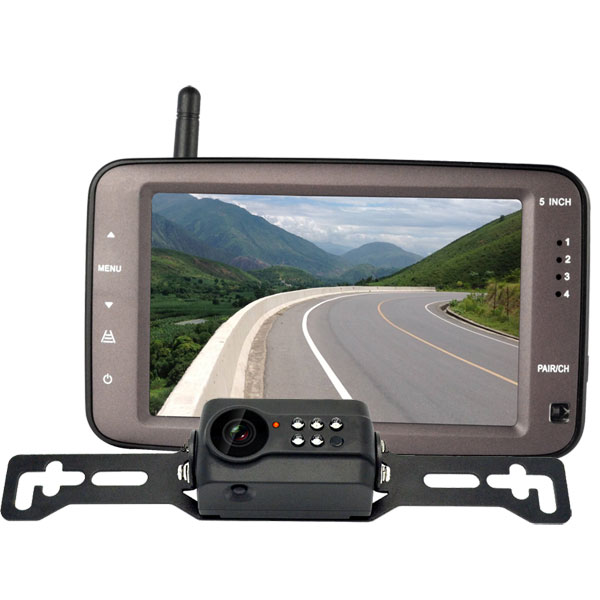

The best positioning of a wireless transmitter and the receiver, is in a clear line-of-sight arrangement.
If you experience a weak signal reception for any reason, then you should check to see that there are not too many factors limiting the transmitter’s range.
The possible culprits include reflections, scattering, attenuation, diffractions and refractions.
In order to improve the range or signal quality, you have to make sure that there are as little reflective surfaces as possible, which may block the receiver’s clear line-of-sight of the transmitter.
You also have to check for irregular surfaces, which may cause the signal to scatter.
The third signal strength limiter is diffraction, which occurs as a result of the signal changing direction as it passes through glass.
Attenuation is caused by a weakening of the signal strength as it passes through a material object, so make sure that there are as little solid surfaces as possible, blocking the receiver from the transmitter.
5. Signal Quality and Interference
There is no huge, noticeable difference between the signal qualities of a wireless backup camera system, and that of a wired system.
All things being equal, both systems will display equally good images, with the wireless system being prone to occasional interference.
This is understandable, given that wireless signals can be interfered with in a number of ways, unlike a wired system.
6. Ease of Installation
The beauty of wireless backup cameras lies in their ease of installation. Wired cameras can sometimes be a challenge to install.
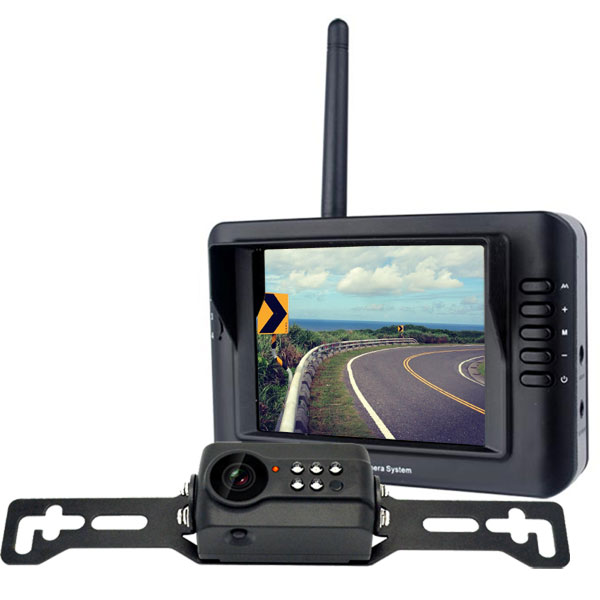

Depending on the type of vehicle, you may need to run wires either underneath or inside the vehicle.
From pickup-trucks to recreational vehicles and other trailers, there is no single or universal method of installing a wired backup camera.
This makes every new installation a potential uphill-task.
With a wireless backup camera, there is no need to run wires.
In fact, installation is as simple as fixing the camera behind the vehicle, and then turning on the wireless receiver, and that’s it.
Different vehicles have different power-lines in different locations, you just have to find out what your vehicles offers, and make the best out of it.
Apart from this issue of electric power from the vehicle, the installation of a wireless backup-camera system in any vehicle, is as easy as A-B-C.
7. Video Resolution and Picture Quality
Resolution refers to the amount of pixels both picked up by the camera, as well as displayed by the monitor.
This determines how crispy clear the image will appear, as well as how much information can be picked up easily from the monitor.
The resolution begins with the camera’s sensor. If the sensor cannot deliver high resolution images, then the rest of the system will suffer.
The transmitter module, the receiver and the display module must also be able to individually handle the current video resolution level.
Older analog systems basically have a lower resolution than newer digital systems.
There is the 720p resolution with 1,280×720 pixels, which is commonly referred to as High-Definition or HD resolution.
Many analog backup camera systems work with this resolution. There is also the 1080p resolution with 1,920×1,080 pixels, commonly referred to as Full-HD. Most digital backup camera systems work with this resolution.
There are other video resolutions, but they are not as popular in backup camera systems, as the above resolutions.
These other resolutions include the 1440p or Quad-HD with 2,560×1440 pixels, the 2160p or Ultra-HD with 3,840×2,160 pixels, and the 4320p or Full Ultra-HD with 7,680×4,320 pixels.
8. Cool and Trendy Gadgets
Wireless systems can also be more aesthetically appealing than wired systems.
The attachment of an antenna to any gadget immediately boosts its looks and perceived value, especially with technology lovers.
Although looks are not everything, it is a fact that antennas actually help a wireless gadget to send and receive better signals.
So not only do wireless backup camera systems look better with their ‘geeky’ antennas, they also actually work better.
9. Purchase Price and Installation Costs
Although they were initially more expensive, wireless backup camera systems now cost almost the same price as wired systems.
You can actually find systems in the market that include both camera and monitor currently costing between $30 and $300.
This price range is both for wired and wireless systems, but when you compare other features side by side, wireless systems will tend to be a bit more costly.
The extra cost should not worry anyone much, because when it comes to installation, the wireless system becomes the cheaper of the two.
This is because of the possible difficulties that can arise when installing a wired system, depending on the type and make of the vehicle.
With a wireless backup camera system, you have very little to worry about, because there is no need to run cables from the back, all the way to the dashboard.
10. Flexible and Versatile
The era of the wired back-up camera has lasted long enough. As is normal with technology, inventions and developments will go on for a while before reducing or ceasing.
In this current era of the wireless backup camera, there is hope, as we all anticipate new developments and technological innovations based on the current technology.
As computers and other electronic devices become smaller each year, many new uses will continue to come to mind.
More and more opportunities will be discovered for the ever smaller and portable devices.
When it comes to the area of backup cameras, this wireless variety sure seems to be more compatible with the new generation gadgets which are all as wireless as possible, including bluetooth and WiFi technologies.
11. Digital Wireless Backup Camera Systems
Digital wireless backup camera systems are those which use bits to function. Instead of a continuous signal as with analog systems, digital systems use bits to store information.
Each bit can either be set to 1 or 0, which equally means TRUE or FALSE in logic.
They are then grouped into larger sizes to comprise Bytes, Megabytes and Gigabytes.
The development of digital systems opened up many possibilities with electronic systems, including backup cameras.
With the help of digitization, precise video resolutions have been developed and standardized, such as the HD, FULL-HD e.t.c.
This has allowed an ever more increasing video quality for both cameras and the display monitors.
In a digital video broadcast for example, each of the 1,920×1,080 pixels of a Full-HD video frame, about 2 million in total, is assigned an RGB value.
This stands for Red, Green and Blue. Each of these three colors is assigned a number of bits, either 8, 16 (referred to as high color), or 24 bits (referred to as true color), or 30, 36 and 48 bits, which are referred to as Deep Color.
12. Easy to Connect Many Cameras Simultaneously
With a wireless backup camera system, you can easily setup as many cameras as you like.
Such a scenario is not as easy with wired systems, where you have to pass individual wires for each camera.
The different camera signals can be easily transmitted on different channels.
Many wireless backup camera system receivers can handle up to 4 video channels simultaneously.
13. Receiver System
The receiver is the part of the system that sits inside the vehicle, mostly on the dashboard.
It receives and displays the video stream being broadcast by the camera in the back.
The receiver is made up of a receiver module, which picks up the transmitted data using resonance.
It also consists of an encoding module, which recreates the data into a video stream and also adds modifications like timestamps and channel numbers where necessary.
Finally, there is also a display module, which is the video screen that most of us see.
A matrix display controller is a module that collects the received and encoded data, and then uses it to create the images that you see on the monitor.
Some receivers take things further by including more than one channel.
Most of such receivers though, can receive data from four different cameras simultaneously.
The receiver system will also include a system for power delivery. Since it requires a Direct Current electricity supply, it is normally drawn from the vehicle.
This happens using either a cigarette socket charger, delivered together with the system, or an installation expert can do a more professional install, in which case the wires will not be visible.
The receiver housing will also contain buttons for changing channels, volume control and miscellaneous functions.
14. Smartphones, WiFi and the Future
The addition of a wireless module in wired backup cameras, to create a wireless backup camera system, is a technological improvement over the wired system.
As we can all attest to, technological advancements are never-ending.
Every new day, month, or year, brings about new developments that improve on the previous standards.
The same can also be said of the wireless backup camera system.
With the development of wireless transmission and reception came other improvements in the backup camera.
The original signals were analog, but then came digital data transmissions, and with that, other developments like WiFi backup cameras, which transmit encrypted data digitally, and can be received with any WiFi enabled device like a smartphone or tablet.
This development is only possible because of the development in the mobile and computing industries, which have created a universal mobile device we now call the smart-phone.
Still, it is left only to the imagination, to try and figure out where technological developments will take us in the future, and what ultimately, the backup camera will evolve into.
